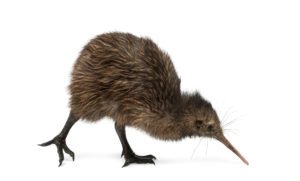A new study suggests kiwi are more diverse than previously thought, thanks to ice age glaciations driving evolution into multiple lineages.

Researchers based in Canada, in collaboration with Department of Conservation scientists, examined a database of kiwi DNA across the geographic range of the five known kiwi species. They found the five kiwi species divided into 11 distinct lineages, as well as another five or six extinct lineages.
The authors suggest advancing glaciers drove kiwi into small refugia before expanding again as the glaciers retreated. The study was published today in the journal PNAS.
More information is available on scimex.org.
The SMC collected the following expert commentary. Feel free to use these quotes in your reporting.
Associate Professor Jason Weir, lead author, Department of Ecology and Evolution, University of Toronto, comments:
“Our research has important conservation implications for New Zealand. In the early 1990s, only three species of kiwi were recognised. Genetic work by my key collaborator Allan Baker extended this number to five species.
“Our work here built on these earlier studies but included a lot more individuals from throughout each species geographic range. Unlike earlier studies which relied on genetic evidence from a single genetic marker, our study used a genome-wide perspective by including approximately 6000 genetic markers.
“The key finding was a clear genetic signature that 11 distinct kiwi lineages were involved (as well as several additional extinct ones). While we do not yet know if these lineages represent distinct species, they do represent genetically unique sets of populations which require management as separate conservation units.
“This has great impact on management decisions. Already, the Department of Conservation has leaned heavily on the findings of our work to decide whether or not birds from certain populations can be bred together as they seek to introduce new populations, or augment the numbers of natural populations.”
Dr Lara Shepherd, genetics researcher, Museum of New Zealand Te Papa Tongarewa, comments:
“This new publication provides the most in-depth study to date into the genetic relationships within kiwi. By examining DNA sequences from kiwi across New Zealand, including from areas where kiwi are now extinct, the authors were able to show that there are 16 to 17 distinct genetic lineages of kiwi (5-6 of these are extinct), far more than the five species currently recognised.
“This new knowledge will help prevent the loss of any more distinct kiwi lineages by assisting the Department of Conservation to set priorities for kiwi conservation.
“This study highlights how much we still have to learn about New Zealand’s animals and plants. If we are still finding new types of kiwi, one of our most iconic and well-funded birds, then how much of the diversity are we overlooking in under-studied groups such as invertebrates, fungi and liverworts?”
Dr Kristina Ramstad, Assistant Professor Vertebrate Biology, University of South Carolina Aiken, comments:
“Weir et al have provided one of the first really powerful genomics papers on kiwi, where they’ve used thousands of loci throughout the kiwi genome to properly characterisation the number of genetically distinct taxa. This is critical to understanding the role of glaciation in kiwi diversification but is also key to current kiwi management.
“There have been 5 species containing 11 differentiated regional groupings recognised in kiwi for some time now. But that was based on extremely limited data and needed further testing. This study provides the first really strong evidence of which groups of kiwi should be managed separately by DOC.
“The study also uses some of the latest bioinformatics techniques to estimate timing among kiwi species, updating divergence times from 4 to 16 million years ago and predated glaciation, to 0.6 to 1.6 million years and coinciding with the major glacial cycles of the Pleistocene.
“This is really interesting and important work – it strongly supports DOC’s current management scheme and shows rather fast adaptive radiation among birds that rarely do anything quickly!”
Note: Dr Ramstad was previously at the Allan Wilson Centre in New Zealand and has studied kiwi genetics.